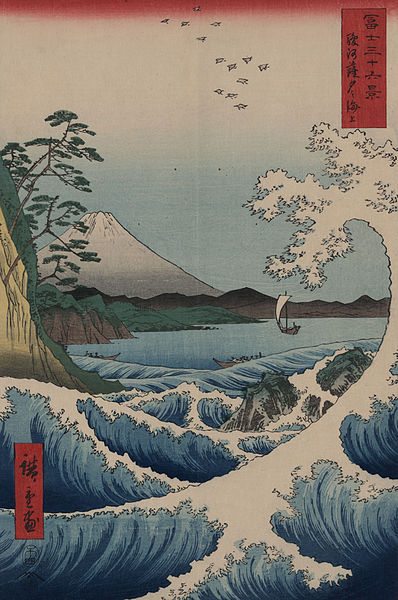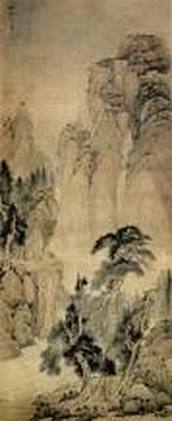Do not search for the truth;
only cease to cherish opinions.
do not remain in the dualistic state.
Avoid such pursuits carefully.
If there is even a trace of this and that,
of right and wrong,
the mind-essence will be lost in confusion.
Although all dualities come from the One,
do not be attached even to this One.
When the mind exists undisturbed in the Way,
nothing in the world can offend.
And when a thing can no longer offend,
it ceases to exist in the old way.
Zen is really very simple, not easy but simple. There are really just a few important things that we Zen teachers have to say and yet we say them over and over again with endless variety. Everything I need to say about these two stanzas I have already said and written before. More important then anything I or any Zen teacher has to say is the practice of clearing our minds, zazen. I think of my role as a Zen teacher in a few different ways. I try to encourage practice by creating opportunities for group practice and also by saying and writing a few inspiring words. Hopefully some day I will help one of my students experience deep insight. Mostly I just try to teach correct zazen and keep my student's zazen on the straight and true. It is actually very easy for a practitioner to loose direction or get stuck in their practice. It is easy for a practitioner to let ideas and attachments enter their practice and lead them astray. Even to carry an idea of non-attachment into practice is a barrier. Sometimes with an idea of non-attachment, or "no effort" a person may sit in Zazen and not do anything except let the mind do whatever it wants and consequently nothing happens. Some one else may have a strong idea of what should be happening during zazen, put in great effort but also be very self conscious in the effort and consequently also not progress. There is a balance between effort and non-attachment,, self- awareness and critical self consciousness, thought and no thought that must be found for zazen to progress. It is not easy to find this balance. And interestingly this balance will change as one's zazen progresses. It is not easy to keep zazen progressing. This is why it is important to have a teacher.
I have been told that at Eheiji, the head temple of Soto Zen in Japan, there is a sign at the front gate that translates into English "Only Don't Know!." I had a friend tell me that he was really good at "Only Don't Know." First, in his confusion about many things he was willing to confess ignorance. This is a good beginning to practice but he was still caught in dualistic thinking. Taking "Only Don't Know" one step further it is a call to clean ourselves of every trace of dualistic thought, in other words practice not-thinking. But even this is a temporary stage in practice because once the mind-essence is realized and the realization deeply cultivated no longer need dualistic thought be avoided because the realization of the non-dual will not be lost. Dualistic thought is a tool and recognized as a tool. In fact dualistic thought becomes sort of roled up into the realization of the non-dual after many years of practice. All dualities come from the One. With practice and experience this truth can become part of our everyday functioning.
Seeing the world through the eye of non-duality changes everything. As Seng Tsan notes nothing can offend. As I wrote about in the previous commentary, we will no longer be pushed around by the world, our minds will become imperturbable (I like this word, Suzuki uses it in Zen Mind Beginners Mind.) This leads to one more definition and experience of emptiness. With the eye of non-duality, even functioning in the world, things are empty because they don't evoke the normal emotional reactions.



 RSS Feed
RSS Feed